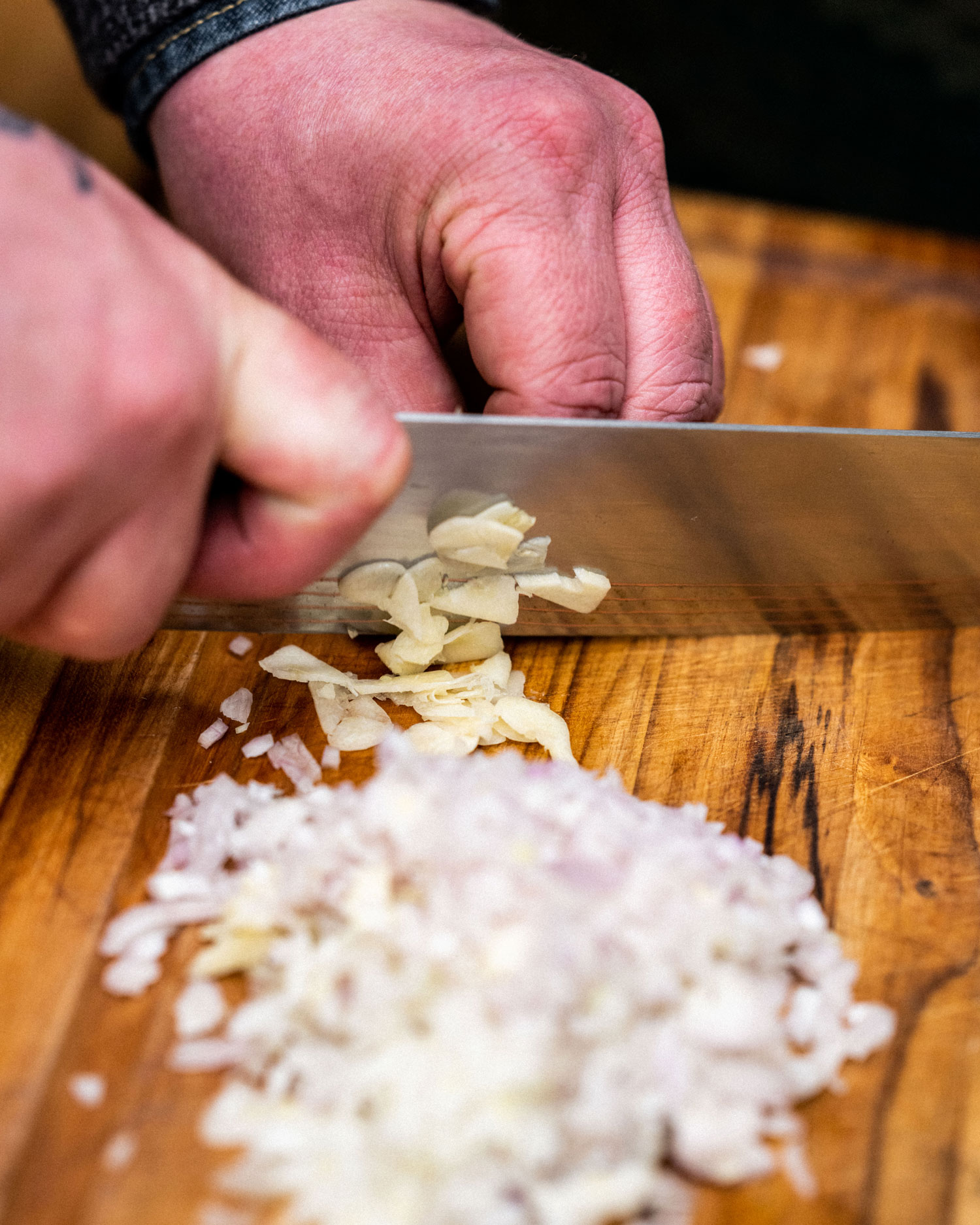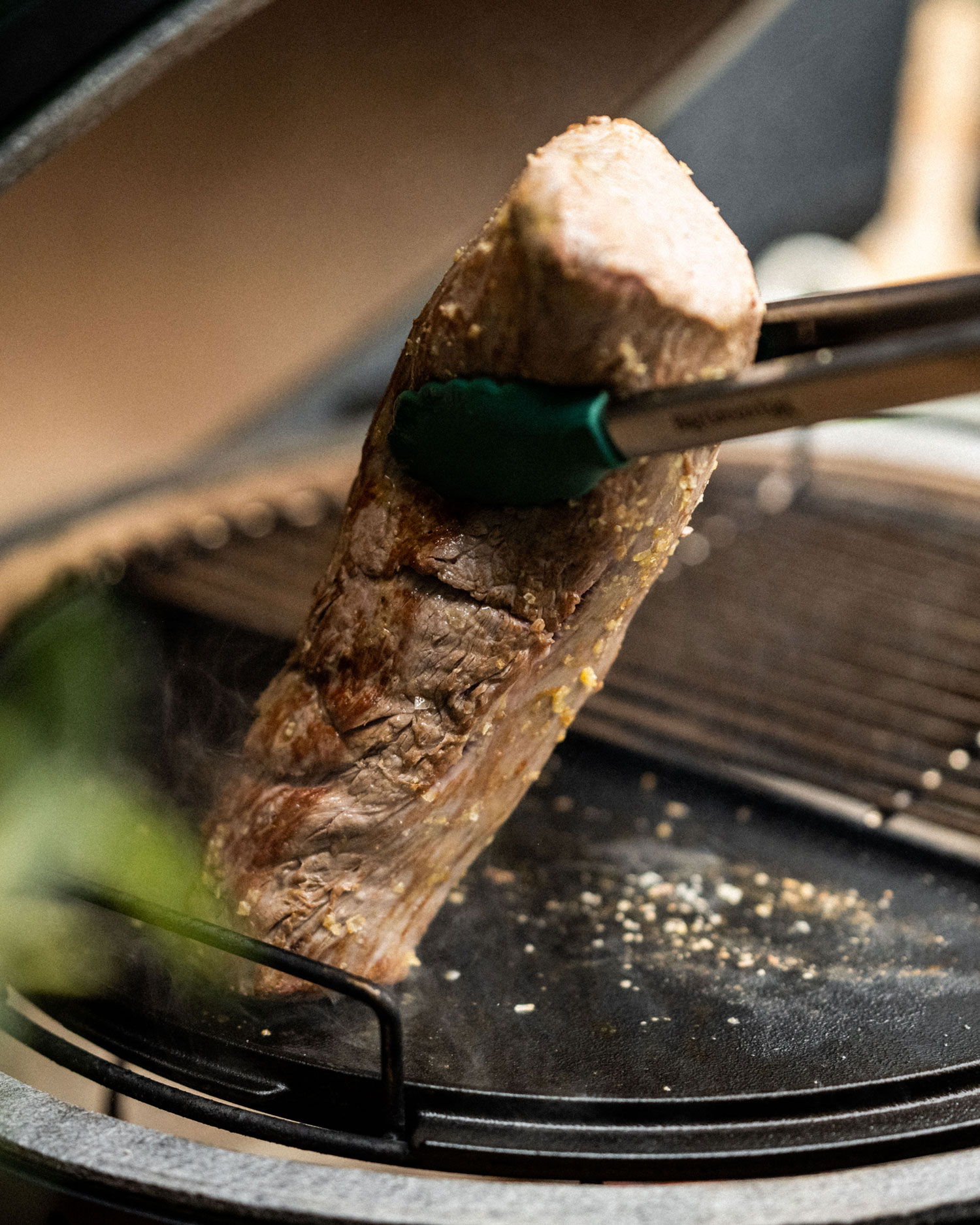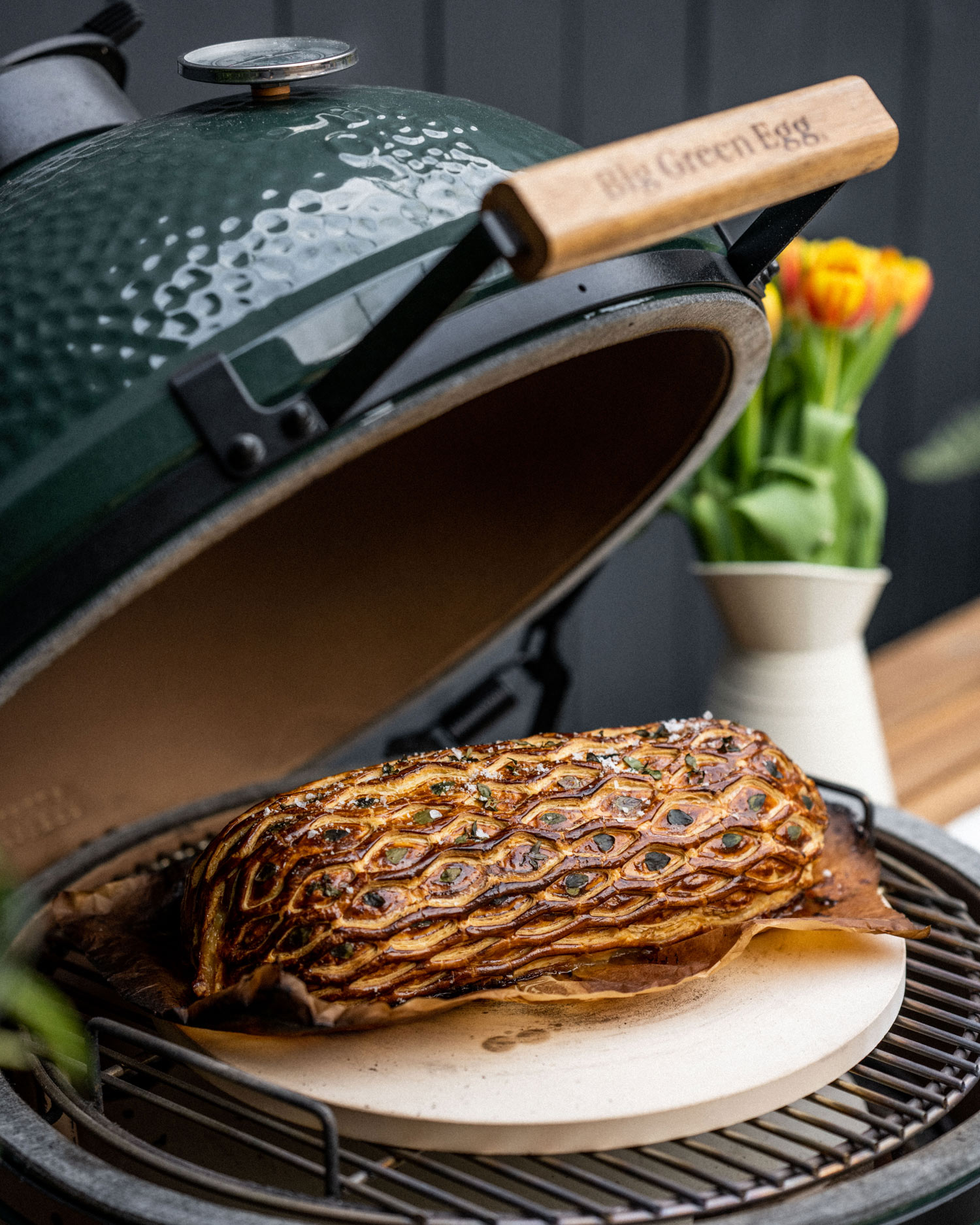Overview
Beef Wellington – the Duke of roasts. Fillet of beef is coated with wild mushroom duxelles and wrapped in puff pastry, emerging golden on the outside and perfectly pink through the middle. While some recipes call for herbed pancakes, we find that cabbage brings better flavour and texture. In the autumn and winter consider swapping the beef fillet for venison loin and adding prunes to the duxelles.
Day 1
Set up your EGG for indirect cooking with the ConvEGGtor in legs-up position. Your target temperature is 180˚C. Alternatively, do this initial prep on your kitchen hob.
Fill a Cast Iron Skillet halfway with water and place directly on the ConvEGGtor. Season with salt and bring to a boil.


Remove the stalks from your cabbage leaves and blanch them in the boiling water, four or five at a time. Once softened, remove and immediately place into ice-cold water.
Once all the cabbage is blanched, remove the skillet from the EGG, empty the water and give it a wipe.


Fit the Stainless Steel Grid on top of the ConvEGGtor and place the Skillet back in. Add the butter, diced shallots and garlic and cook until softened.
Now add the chopped mushrooms and sprigs of thyme. Stir well and cook until the moisture from the mushrooms has come out and evaporated, and they begin to caramelise. Remove from the heat, add the breadcrumbs and season well. Leave the mushroom duxelles to cool completely.


Add a Plancha to your EGG. Remove any string from your chilled fillet, rub all over with rapeseed oil and season with salt. Sear all sides of the fillet, so that it gains as much colour as possible. Remove and allow to cool.


To build the wellington, overlap two pieces of clingfilm onto a large chopping board. Wring out the cabbage and lay it onto the clingfilm, slightly overlapping, in a double row. On top of this, add a layer of serrano ham, then an even layer of the mushroom duxelles (you may want to use a rolling pin to spread it).


Rub your fillet all over with English mustard and place in the centre of your wellington layers. Carefully roll the layers around the fillet. Twist both ends of the clingfilm to make sure you end up with a tightly wrapped sausage shape.


Refrigerate overnight.
Day 2
Lay one sheet of pre-rolled puff pastry on a board, roll it a little thinner, then egg wash all over. Unwrap the wellington and place it at one end of the pastry.


Roll the wellington in the pastry, ensuring not to overlap too much. Seal the ends by tucking them in on themselves.


Now take a second sheet of puff pastry and lay it on the floured table, dust the surface of the pastry with flour, then roll a lattice cutter along its full length to create a lattice.


Egg wash the wellington again and, using two hands, cover with the lattice, trimming and tucking in the sides.


Give the wellington one final egg wash, then stud the lattice with thyme leaves. Leave to rest in the fridge for at least 1 hour.


Load and light your EGG and get it to 200˚C with the Baking Stone in place. Place the wellington on the stone and cook for 30 minutes. You are looking for an internal temperature of 54˚C so after these 30 minutes, begin checking every 5-10 minutes (the wellington should take between 35 and 40 minutes in total).
Once at 54˚C, remove and rest for 30 minutes before carving and serving.





